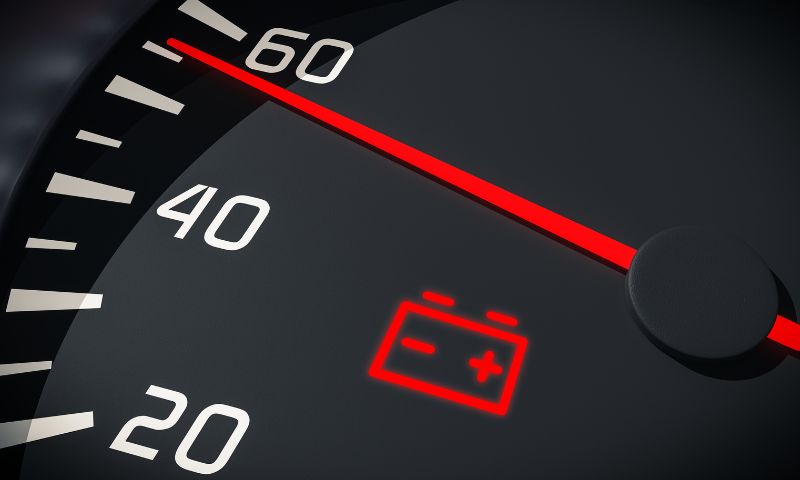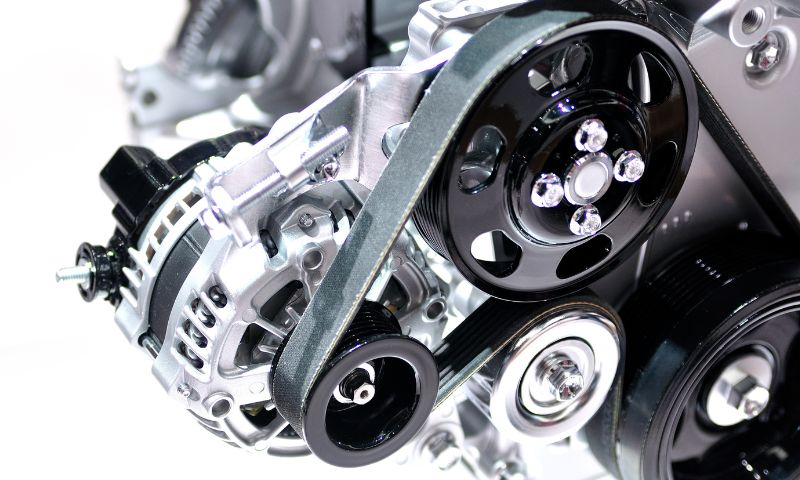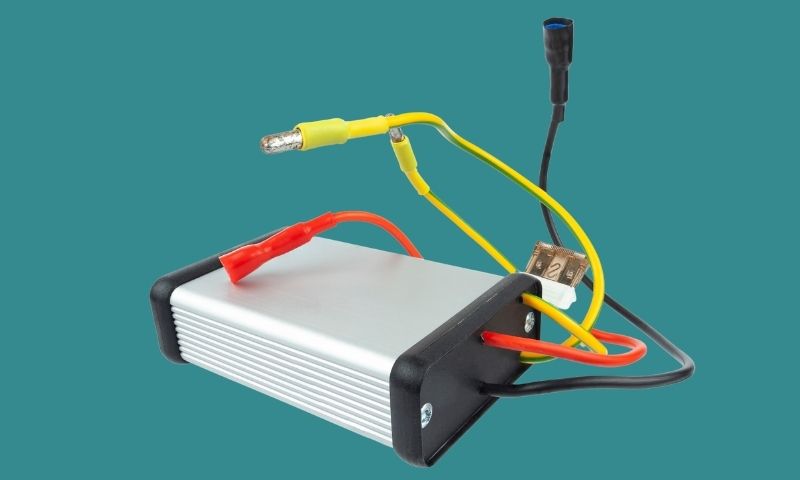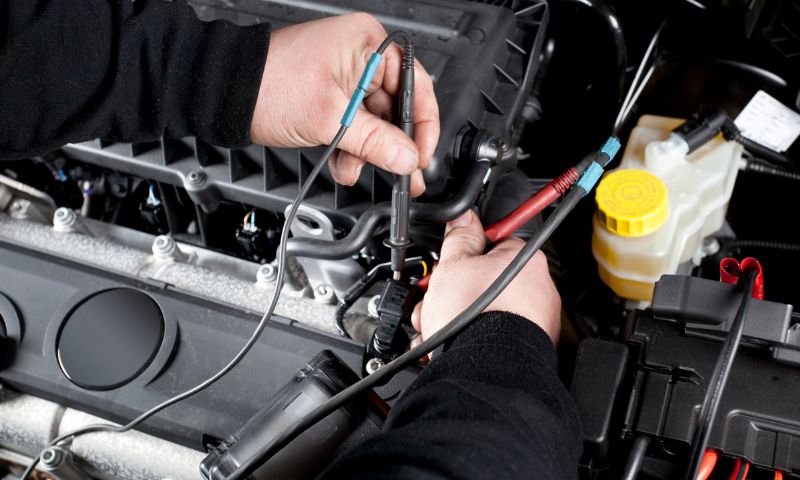The car battery light may remain on after replacing the battery due to various reasons. One possible cause is a faulty alternator, which is unable to charge the new battery effectively. Another potential issue could be a damaged voltage regulator, leading to an incorrect voltage supply to the battery. Additionally, loose or corroded connections might hinder the proper flow of current between the battery and the alternator. A worn-out serpentine belt can also impede the alternator’s function, affecting the battery’s charging. Finally, the dashboard warning light itself could be malfunctioning, displaying a false signal even though the battery and charging system are functioning correctly.
So, you’ve replaced your car battery, expecting that pesky little battery light to turn off, and yet, it’s still staring at you like a stubborn teenager refusing to clean their room. Fret not, my friend, as I, your trusty car guru with years of experience (and a knack for dad jokes), am here to help.
In this hilarious and informative blog post, we’ll dive into the nitty-gritty of why your car battery light might still be on after replacing the battery. We’ll explore common reasons, like alternator issues (which, by the way, is the main source of charging for your battery) and voltage regulator malfunctions (a little component that makes sure your battery gets just the right amount of power).
So buckle up, and let’s get ready to laugh and learn (but mostly learn) our way through this electrifying mystery.
Let’s dive deeper into the world of car batteries and find out why that pesky little warning light on your dashboard won’t give up.
Common Reasons for Car Battery Light Staying On
First things first, we need to understand the usual suspects behind that stubborn battery light. So, let’s take a closer look at alternator problems, voltage regulator issues, and electrical system dilemmas.

A. Alternator Problems
Ah, the alternator – the heart of your car’s charging system! It keeps your battery powered up and your engine running like a well-oiled machine. But, just like your favorite superhero, even the mighty alternator has its weaknesses.
- Faulty alternator: If your alternator goes kaput, it can’t charge your battery, and that pesky battery light will stay on like a stage-five clinger.
- Worn alternator belt: The alternator belt (or serpentine belt) is like the personal trainer of your engine. It keeps everything in shape, but if it gets worn or damaged, the alternator might not be able to generate enough electricity.
- Damaged alternator wiring: Bad wiring can mess up your car’s electrical flow, much like a traffic jam on your way to work. And when the flow is disrupted, that annoying battery light will keep shining.
B. Voltage Regulator Issues
Next up, we have the voltage regulator, the unsung hero of your car’s charging system. It’s like a backstage manager for your battery, making sure everything runs smoothly.
- Malfunctioning voltage regulator: If the regulator goes rogue, it can’t control the voltage output, and the battery light might as well be singing, “I will always love you” by Whitney Houston.
- Improper voltage output: Too much or too little voltage spells trouble for your battery and charging system, and that battery light will remain front and center, like a Broadway diva.
C. Electrical System Problems
Finally, let’s talk about your car’s electrical system. It’s like a complex network of highways, connecting all the components and keeping things running smoothly.
- Damaged wiring or connections: A single bad wire or connection can throw a wrench in your electrical system, and that battery light will keep shining like the Northern Lights.
- Blown fuses: Fuses are like the bouncers of your car’s electrical system. If one of them fails, the battery light might as well be a VIP guest that just won’t leave.
- Faulty sensors or switches: These little gadgets are like traffic cops, directing the flow of electricity. But if they fail, that battery light will stay on like a lighthouse guiding lost ships.
Now that we’ve covered the common culprits behind that pesky battery light, it’s time to roll up our sleeves and get down to business. Let’s figure out how to diagnose the issue and get your car back in tip-top shape.
Diagnosing the Issue
From visual inspections to using high-tech diagnostic tools, let’s explore how to uncover the secrets behind your car’s battery light.
A. Visual Inspection
Before you go all Inspector Gadget, start with the basics. A visual inspection can reveal a lot about your car’s condition. It’s like detective work, but for cars.
- Checking for loose connections and damaged wiring: Loose connections and damaged wires are like a game of hide-and-seek. You’ll need to look under the hood and follow the wires to spot any potential issues.
- Inspecting the alternator belt: Let’s take a step-by-step approach to inspecting the alternator belt. You don’t want to miss any clues, after all.
- Park your car on a level surface and turn off the engine. Safety first!
- Open the hood and locate the alternator belt. It’s usually a long rubber belt wrapped around several pulleys.
- Check the belt for cracks, fraying, or glazing. If it looks like it’s been through a war zone, it’s time for a replacement.
- Press down on the belt with your thumb to check for tension. If it’s too loose, you might need to tighten or replace it.
B. Using Diagnostic Tools
When the going gets tough, the tough get… diagnostic tools! These gadgets are like superheroes, saving the day when you’re stumped by your car’s mysteries.
- Multimeter magic: A multimeter is like a crystal ball for your car’s electrical system. It can help you check voltage levels, spot issues, and even predict your car’s future (well, not really, but you get the idea!).
- OBD-II scanner wonders: The OBD-II scanner is like a private investigator for your car. It can uncover hidden diagnostic trouble codes, making it easier to pinpoint the problem and get back on the road. It’s elementary, my dear Watson.
You’ve done your detective work, and now it’s time to fix the issue. Let’s dive into the nitty-gritty of solving your car’s battery light woes.
Solutions for Different Scenarios
From alternator-related fixes to electrical system repairs, we’ve got you covered. Buckle up, and let’s get started.
A. Alternator-related Fixes
Ah, the alternator – the heart of your car’s charging system. Here’s how to mend a broken heart (we’re talking about the alternator, of course).

- Replacing or repairing a faulty alternator: No more tears, it’s time to fix that alternator!
- Disconnect the battery and locate the alternator.
- Remove the belt, connectors, and mounting bolts.
- Take out the old alternator and install the new one.
- Reconnect everything and test it out. Voilà!
- Adjusting or replacing a worn-out alternator belt: Don’t let a saggy belt ruin your day. Here’s how to fix it:
- Loosen the alternator’s mounting bolts.
- Adjust the alternator to achieve proper tension.
- Tighten the bolts and test the tension.
- If needed, replace the belt and repeat the process.
- Repairing or replacing damaged alternator wiring: Wiring woes? No problem! Just follow these steps:
- Disconnect the battery and find the damaged wires.
- Remove any damaged wire connectors.
- Repair or replace the wires as needed.
- Reconnect everything and test the system.
B. Addressing Voltage Regulator Issues
Voltage regulators need love too. Here’s how to care for these unsung heroes.

- Replacing a malfunctioning voltage regulator: Out with the old, in with the new!
- Disconnect the battery and locate the voltage regulator.
- Remove the connectors and mounting screws.
- Replace the old regulator with a shiny new one.
- Reconnect everything and test the system.
- Seeking professional assistance for proper calibration: Don’t be a hero; let the pros handle the calibration for maximum safety and performance.
C. Resolving Electrical System Problems
Electrical gremlins, begone! Here’s how to banish those pesky critters once and for all.

- Repairing or replacing damaged wiring and connections: Wave goodbye to damaged wires with these steps:
- Disconnect the battery and locate the damaged connections.
- Remove any damaged connectors or wires.
- Repair or replace as needed, and reconnect everything.
- Test the system to ensure success.
- Changing blown fuses: Swap out those tiny troublemakers with ease:
- Locate the fuse box and identify the blown fuse.
- Remove the old fuse and replace it with a new one of the same rating.
- Test the system to ensure the issue is resolved.
- Replacing faulty sensors or switches: Give your car’s sensors and switches the TLC they deserve:
- Disconnect the battery and locate the faulty sensor or switch.
- Remove the old component and replace it with a new one.
- Reconnect the battery and test the system.
With these solutions in hand, you’ll be well-equipped to tackle any battery light challenge that
comes your way. Your car will thank you, and you’ll be back on the road in no time, cruising towards your next adventure with confidence.
Remember, while DIY repairs can be fun and save you money, sometimes it’s best to seek the expertise of a professional mechanic when dealing with complex electrical components. Your car’s health and your safety should always be top priorities.
With your newfound knowledge and these trusty fixes, you’ll be able to diagnose and resolve those pesky battery light issues like a pro. Happy motoring, and may your dashboard battery light shine no more (unless it’s supposed to, of course)!
Now that we’ve tackled the solutions to various car battery light scenarios, let’s shift gears and focus on preventative measures. After all, the best offense is a good defense, right?
Preventative Measures
In the world of car maintenance, it’s always better to be proactive than reactive. So, let’s dive into some key preventative measures that will keep your ride running smoothly and your dashboard warning lights at bay.
A. Regular Maintenance
As the old saying goes, “An ounce of prevention is worth a pound of cure.” One of the best ways to prevent battery light issues is to conduct periodic inspections of the charging system. Here are a few benefits of proper battery maintenance and care:
- Prolonged battery life: Regular checkups can help extend the life of your battery by identifying and addressing issues early on.
- Improved performance: Ensuring that your battery and charging system are in good condition can lead to better overall vehicle performance.
- Money-saving: Early detection of problems can help you avoid costly repairs down the line.
B. Promptly Addressing Warning Signs
When it comes to dashboard warning lights, it’s essential not to hit the snooze button. If you see a warning light, don’t ignore it. Instead, seek professional assistance for diagnosing and fixing the issue. Here’s why this is important:
- Safety: Addressing warning signs promptly can help prevent dangerous situations, keeping you and your passengers safe on the road.
- Prevention of further damage: Ignoring warning signs can lead to more severe problems, causing more extensive damage to your vehicle.
- Peace of mind: Knowing that your car is in good working condition will allow you to enjoy your rides without worrying about potential breakdowns.
In conclusion, taking care of your car’s electrical system through regular maintenance and promptly addressing warning signs can save you from headaches, costly repairs, and time-consuming breakdowns. Keep these preventative measures in mind, and you’ll enjoy many more worry-free miles on the open road.
Conclusion
There you have it, folks! We’ve covered the common reasons for car battery light issues, how to diagnose them, and the solutions for different scenarios. But most importantly, we’ve learned the value of preventative measures in keeping our vehicles in tip-top shape. Remember, a little TLC for your car can go a long way in preventing those pesky warning lights from haunting your dashboard. So, keep up with regular maintenance, address warning signs without delay, and you’ll be cruising down the highway without a care in the world. Happy motoring.
FAQ
What is the most common cause for the car battery light staying on?
The most common cause for the car battery light staying on is a faulty alternator. A malfunctioning alternator may not charge the battery properly, causing the battery light to illuminate on the dashboard.
How do I know if my alternator belt needs to be replaced?
Signs that your alternator belt needs to be replaced include visible wear and tear, cracks, fraying, or a squealing noise coming from the engine bay. If you notice any of these issues, it’s time to consult a professional mechanic for a replacement.
Can a blown fuse cause the battery light to stay on?
Yes, a blown fuse can cause the battery light to stay on. If a fuse related to the charging system is blown, it may disrupt the flow of electricity and cause the battery light to illuminate.
How often should I inspect my car’s charging system?
It’s a good idea to inspect your car’s charging system at least once a year or during regular maintenance check-ups. This will help identify any potential issues early on, preventing more significant problems down the road.
What should I do if my dashboard battery light comes on while driving?
If your dashboard battery light comes on while driving, it’s essential to address the issue as soon as possible. Find a safe place to pull over and turn off any unnecessary electrical components (e.g., air conditioning, radio). Then, consult your owner’s manual for guidance and consider seeking professional help from a mechanic.
Is it safe to drive with the battery light on?
Driving with the battery light on is not recommended, as it may indicate a problem with your charging system. Continuing to drive with the light on can lead to a dead battery or damage other electrical components in your vehicle. It’s best to address the issue immediately and consult a professional mechanic for assistance.
Related Post:

